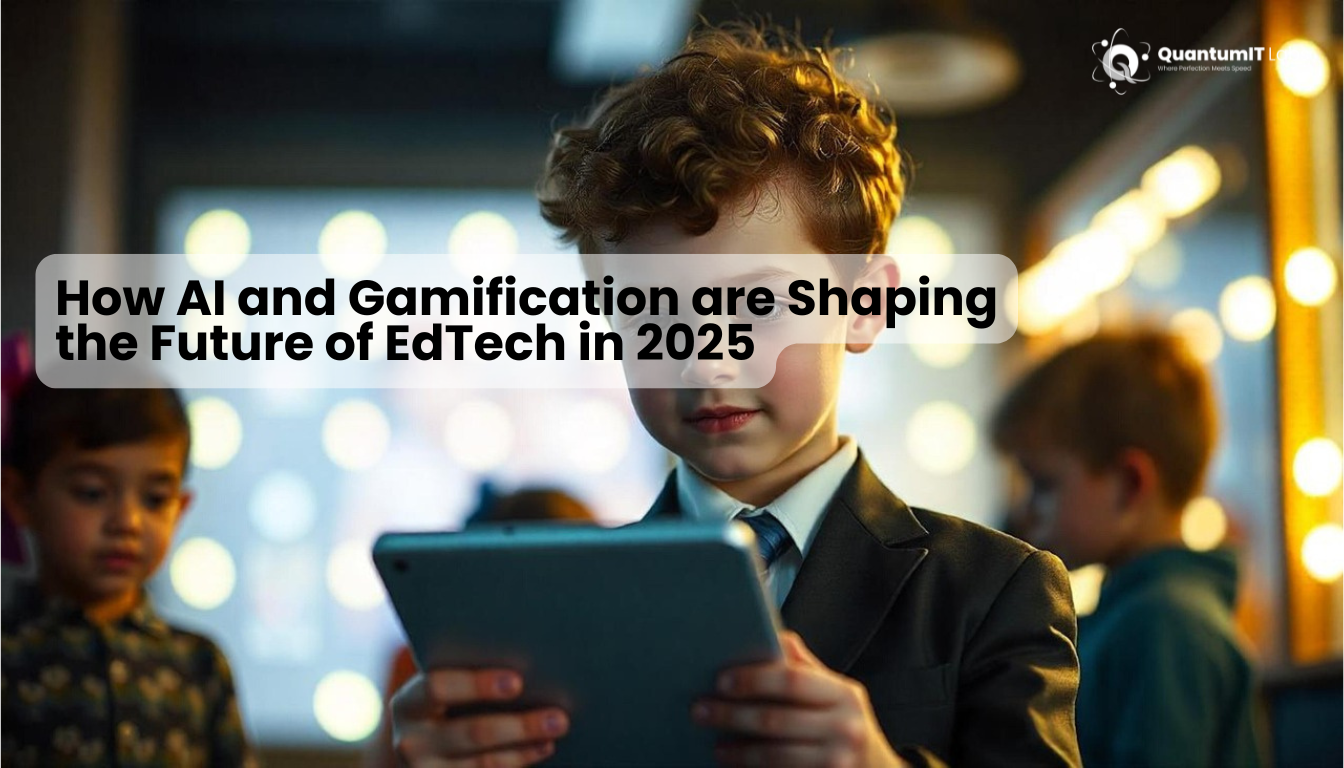The world of education is evolving rapidly, and technology is at the forefront of this transformation. In 2025, Artificial Intelligence (AI) and gamification are playing pivotal roles in reshaping how we learn, teach, and interact with educational content. These innovations are not only enhancing the learning experience but are also making education more personalized, engaging, and accessible for all. Let’s explore how AI and gamification are revolutionizing the EdTech landscape.
1. AI-Powered Personalized Learning: A Tailored Approach
One of the biggest challenges in traditional education has been the one-size-fits-all approach. However, AI is breaking this mold by offering personalized learning experiences.
AI-driven platforms, such as Khan Academy and Coursera, are able to analyze individual learning patterns, strengths, and weaknesses. This allows them to deliver content that’s specifically tailored to each learner’s needs, ensuring a more effective learning experience. Whether it’s adjusting difficulty levels or suggesting supplementary resources, AI helps students learn at their own pace.
Moreover, AI is also enhancing teacher effectiveness by providing real-time feedback on student performance, helping educators identify areas where students need extra support. This data-driven approach leads to better outcomes and helps both students and teachers succeed.
2. Gamification: Making Learning Fun and Engaging
Gamification has been one of the most exciting trends in EdTech, and it’s not just for K-12 students anymore. By incorporating game elements into learning platforms, EdTech companies are making education more interactive, fun, and rewarding.
In 2025, platforms like Duolingo and Classcraft are using gamified learning systems to motivate students. These platforms utilize points, badges, leaderboards, and even challenges to turn education into a more engaging experience. This approach not only encourages consistent learning but also enhances problem-solving skills, teamwork, and creativity.
The element of competition in gamification also makes students more motivated to engage with the content and push through learning obstacles. It helps them build a sense of accomplishment as they “level up” in various subjects.
3. AI and Gamification in Teacher Training
AI and gamification are not only transforming how students learn, but they’re also being utilized to improve teacher training. By using AI, training programs can adapt to the learning style and experience level of educators, ensuring that every teacher receives the training they need to excel.
Furthermore, gamification in teacher professional development can make learning new teaching techniques and tools more engaging. Programs like TeacherGaming use game mechanics to help educators integrate digital learning tools and gamified lessons into their classrooms.
4. Bridging Gaps in Education Access
AI and gamification are also playing a significant role in bridging educational gaps across different regions. In areas where traditional schooling resources are limited, AI-powered platforms can offer quality learning experiences to students in remote or underserved areas. Additionally, gamification can be used to create engaging content that doesn’t require expensive resources or infrastructure.
For example, Google’s AI-powered Project Loon aims to provide internet access to remote areas, giving more people access to online education platforms. With access to learning resources and the engaging nature of gamified education, students in disadvantaged regions can now enjoy quality education without geographical barriers.
5. Preparing for the Future: Skill Development for Tomorrow’s Jobs
The rapid advancements in technology mean that the future workforce will need new skills to thrive. AI and gamification are helping students acquire the skills needed for the jobs of tomorrow by making learning more dynamic and aligned with real-world scenarios.
For instance, SimCityEDU, a gamified platform used to teach students about urban planning and management, helps learners develop problem-solving, critical thinking, and analytical skills. These platforms are tailored to the demands of the future job market, ensuring students are prepared for evolving industries.
6. The Role of AI in Lifelong Learning
Lifelong learning is becoming more crucial as people transition between jobs, upskill, and re-skill throughout their careers. AI and gamification are making continuous learning more accessible and enjoyable. Platforms like LinkedIn Learning and Udemy are using AI to recommend courses based on a learner’s past activities and career aspirations. Meanwhile, gamified learning keeps adult learners engaged, encouraging them to pursue new skills while having fun.
In 2025, lifelong learning will be more personalized, and individuals can look forward to learning experiences that evolve with their careers and interests.
Conclusion: The Future of EdTech is Here
As we look ahead to 2025, AI and gamification are clearly the driving forces in EdTech innovation. Together, they are creating personalized, engaging, and effective learning experiences that benefit both students and educators alike.
With the continued growth of AI and gamification, the future of education will be more adaptive, inclusive, and empowering. Whether you’re a student eager to learn, an educator looking to improve your teaching methods, or a lifelong learner staying ahead in your career, EdTech innovations are paving the way for a brighter future in education.
Are you ready to embrace the EdTech revolution? Contact Us Now!

